Chapter 10: Women and the Media
Chapter Summary
- Overview
- Profile: Ann Moore: Leveraging the Value of Women
- Project: Women’s Edition
- Questions
- Additional Resources
Chapter 10 discusses the progress that women have made in organizing against exclusion in media. Women who demanded coverage from media outlets were originally categorized as misfits or insane, as they were perceived as departing from their traditional domestic roles. Throughout the 1970s, media outlets and journals covering a range of feminist issues emerged around the world, including Isis International Bulletin in Italy and the Philippines and Manushi in India. Women have been gaining influence in media both within the United States and across the world. Ann S. Moore was the CEO of Time Inc., the largest publisher in the U.S., and steered the business from the print age to the media age during the 2000s. The Women’s Edition program brings together women journalists across the global South to report on various issues from their respective regions and countries.
Key Terms
- Ann S. Moore
- Gender and Media Diversity Journal
- International Federation of Journalists
- International Women’s Media Foundation
- Isis International Bulletin
- Manushi
- Ms. Magazine
- Population Reference Bureau (PRB)
- Revolution
- Women’s Edition
- Woodhull & Clafin’s Weekly
- World Association of Christian Communicators (WACC)
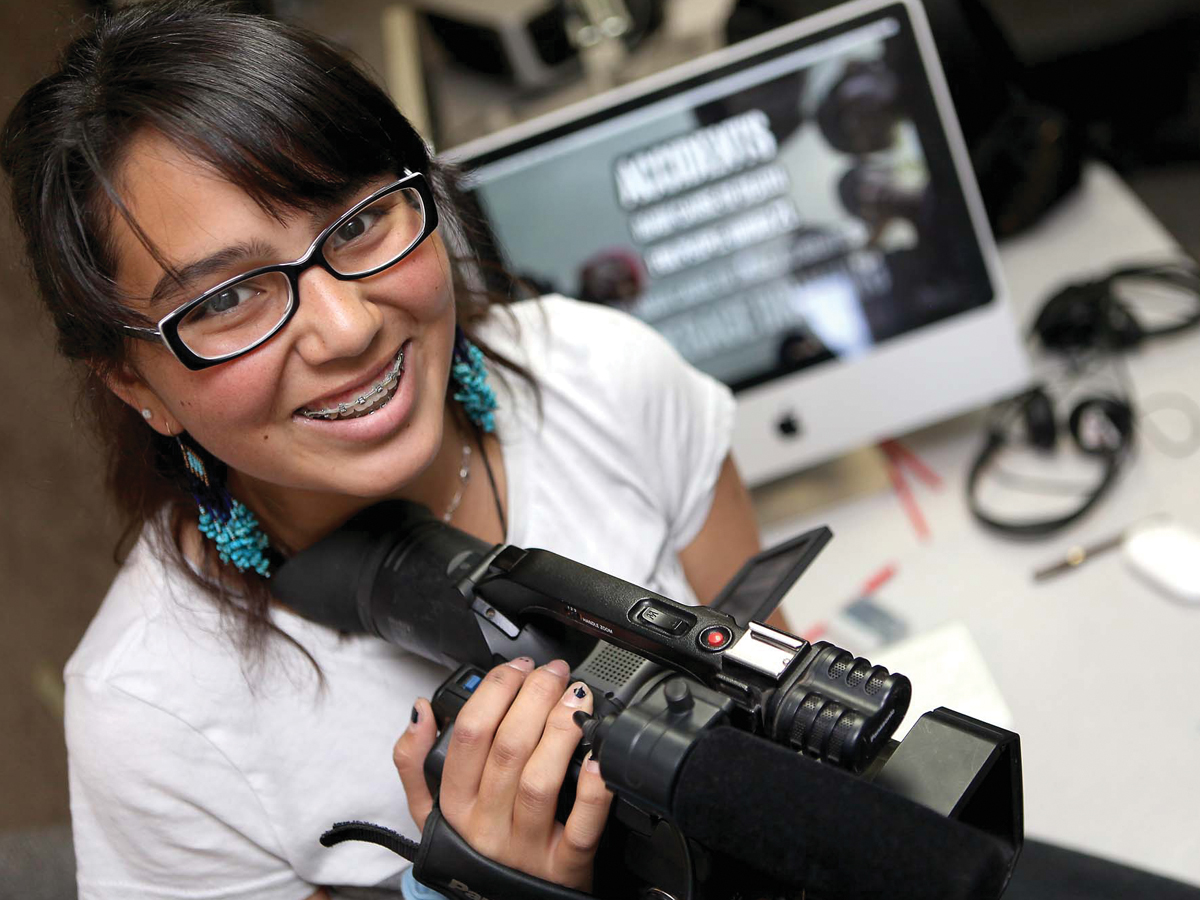
Overview
By Carolyn M. Byerly
Women brought a gendered analysis of the mass media to the global stage in the 1970s when a multipart critique was first presented at the 1976 Mexico City conference, which opened the U.N. Decade for Women. Much of the substance of that critique remains relevant today. But women’s fight for equal representation in the media began much earlier.
History of Exclusion and Stereotypes
Women’s exclusion from the serious news of the day was raised as early as the 18th century by women suffragists and women’s rights activists in Europe and North America. The early suffrage leaders needed the attention of the news media to carry their ideas and activities to wider publics, but male-run newspapers and magazines largely ignored the women activists. The news outlets that did cover women frequently trivialized their goals. Women who departed from the social norms of passivity and deference to male authority, and the traditional roles of wife and mother, risked being characterized as inappropriate, insane or misfits. If they demanded equality with men, the media depicted them either as curiosities or as loud, militant and aggressive. Such characterizations would continue into the early days of modern feminism (Epstein, 1978).
Not only were women’s issues and leaders excluded from the media, but bias against women was practiced in reporting women’s issues and leaders. Such treatment inspired women in many countries to establish their own magazines, newspapers and book publishing houses during the late 19th and early 20th centuries. The post-Civil War Woodhull & Claflin’s Weekly had as its aim to make Victoria Woodhull the first woman president, while the Lily had a broad women’s rights agenda, and the Una championed the rights of immigrant and poor women. Elizabeth Cady Stanton and Susan B. Anthony’s short-lived but important newspaper the Revolution addressed a spectrum of issues related to women’s discrimination, including low wages of working women and the right to vote.
A New Era of Women’s Rights
By the late 20th century, women across the globe focused on enacting political and legal reforms to extend women’s equality and access to social institutions and to ensure protection of their rights. It was a new era for women’s rights. Many women became politicized during independence movements, as countries broke from colonial powers. The legacy of that activism carried over into women’s media like Ms. magazine, founded by U.S. feminists in the early 1970s; Manushi, an Indian feminist journal founded in the mid-1970s; and Isis International Bulletin, published first in Rome, then later in Manila.
Some feminist leaders were motivated by the enduring problems of exclusion and misogynistic representation in mainstream media to establish their own publishing houses, today numbering many dozens (see www.wifp.org/DWM/publishers.html). Women’s organizations like the South African group Gender Links have assumed dual missions of establishing their own journals, like Gender and Media Diversity Journal, as well as undertaking training for journalists in order to address persistent patriarchal messages in news, advertising, films and television programs (Gender Links, www.genderlinks.org.za/page/publications).
Another modern media concern was women’s lack of access to media professions. Women were severely underrepresented in newsrooms, television and radio stations, film production and ownership of media outlets. More women on the inside, it was argued, would help resolve many of women’s other problems with the media. Women such as Ann S. Moore (Time Inc.), profiled in this chapter, acknowledge the importance of women in their media operations.

Underrepresentation in news production arose through the U.N. Decade for Women (1976-1985), with leaders pushing the United Nations to fund women’s news and feature services in the 1970s and 1980s to increase global news flow from progressive women’s perspectives. They also gained funding for research on women and media and generated their own research. Two examples are the Brussels-based International Federation of Journalists and the World Association of Christian Communicators (WACC). The latter of these is among advocacy groups that sponsor research aimed at enabling strategy-building for women’s equality in the media. WACC’s (Canada) periodic study Who Makes the News? focuses on women’s representation in news worldwide, while the International Women’s Media Foundation (United States) conducts research on women’s status in news organizations. IWMF also recognizes women journalists for courage in reporting with an annual “Courage in Journalism” award.
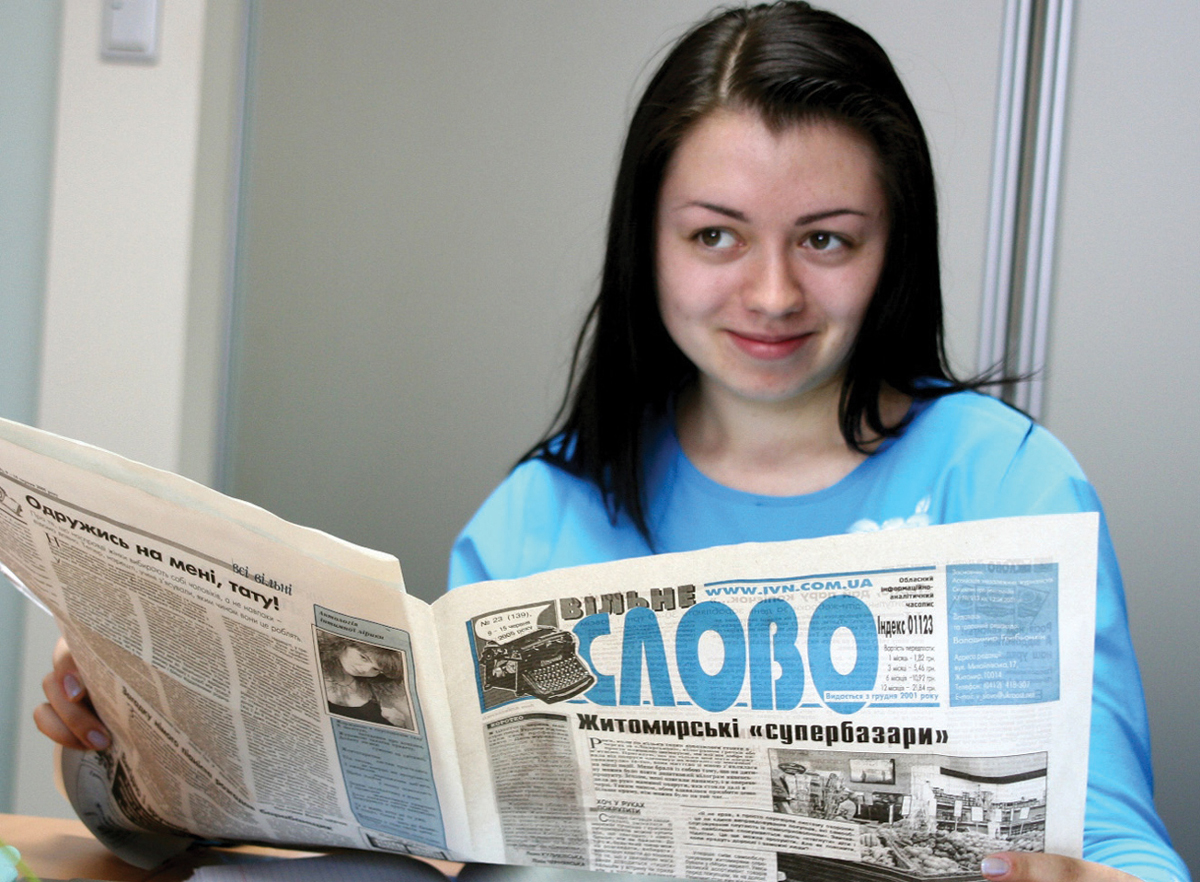
Such groups offer workshops to teach media professionals how to include gender angles in news. Women have made slower progress in communications governance and policymaking, at national and international levels, so these remain important areas for critique and action. Programs such as USAID-funded Women’s Edition have given women strong foundations for journalism careers.
Carolyn M. Byerly is a professor in the Department of Journalism, School of Communications, Howard University, in Washington, D.C. She researches communications policy related to women and minority ownership, media and gender, race, sexuality and nationality. She is the co-editor of Women and Media: Global Perspectives (Blackwell, 2004), co-author of Women and Media: A Critical Introduction (Blackwell, 2006) and principal investigator for the study Global Report on the Status of Women in News Media, a 59-nation study sponsored by the International Women’s Media Foundation (2011).
PROFILE: Ann Moore – Leveraging the Value of Women
Women who have achieved top management positions in media corporations are few. Ann S. Moore rose to the top of one of the world’s most influential news organizations, Time Inc., through perseverance, a willingness to take calculated risks and a canny perception of the future of media.
The impressive thing about Ann S. Moore, who ran Time Inc. from 2002 to 2010, is not her global profile as the first woman to head the legendary company that boasts 115 international magazine titles and some 137 million monthly readers. It’s not even her down-to-earth, straight-talking style, the friendships with influential policymakers and A-list celebrities or her habitual appearance on every Most Powerful Woman list ever devised. Rather, the impressive thing, as you listen to Moore review her rise to the top, is the out-and-out glee with which she did the job.
Revamping Time Inc. for the Digital Age
It was far from easy. As chair and CEO, Moore arguably led Time Inc. through its greatest trials and transformations — and emerged victorious. She successfully steered the largest magazine publisher in the United States out of its fierce attachment to print and straight into the digital age. She streamlined its multilayered, old-boy centralized structure into more nimble brand clusters, making managers diverse and more accountable. “We were facing a crisis,” she acknowledges today. “It was not easy to completely transform an industry and drag everybody, kicking and screaming, into the 21st century.”
Then again, Moore could draw on deep experience in setting goals and tackling the challenges. A keen observer and an unabashed fan of Time Inc.’s unique role in the media landscape — the company has influence that streams from Main Street to Wall Street and from Pennsylvania Avenue to Hollywood and Vine — Moore enjoyed a career at the company that spanned 32 years. “I know every inch of this business,” she declares, not particularly bragging, but merely stating the facts.
At a meeting just before her departure is officially announced, Moore is comfortably settled into a plump armchair in the spacious, thickly carpeted executive suite on the 34th floor of Rockefeller Center’s landmark Time-Life Building. The sweeping views of midtown Manhattan highlight her success. Moore, at 60, looks back with pride and gusto. Clearly, she has thrived on the risks as much as the wins. “I work with really smart people and we produce really amazing products,” she says. “It’s easy to stay working somewhere for 32 years when you’re not bored.”
Born in Biloxi, Mississippi, the oldest of five kids, Moore spent her formative years on a series of military bases. “My father was in the Air Force until I was in about sixth grade,” she says. “I moved all the time when I was young and I have nothing but fabulous memories of every move.” She credits her dad, who was a pilot, with shaping her attitudes toward work. “I always knew I could do the job of CEO, but it wasn’t my lifelong ambition,” Moore explains. “My father retired from the military and went on to a whole second career in aviation. So I had a model growing up that said, ‘Hey, you don’t have to just do one thing. And you don’t necessarily have to aspire to being the CEO to be successful.’” That outlook served her well as she climbed the ladder. “I always had a lot of confidence,” she says. “You have to not fear failure.”
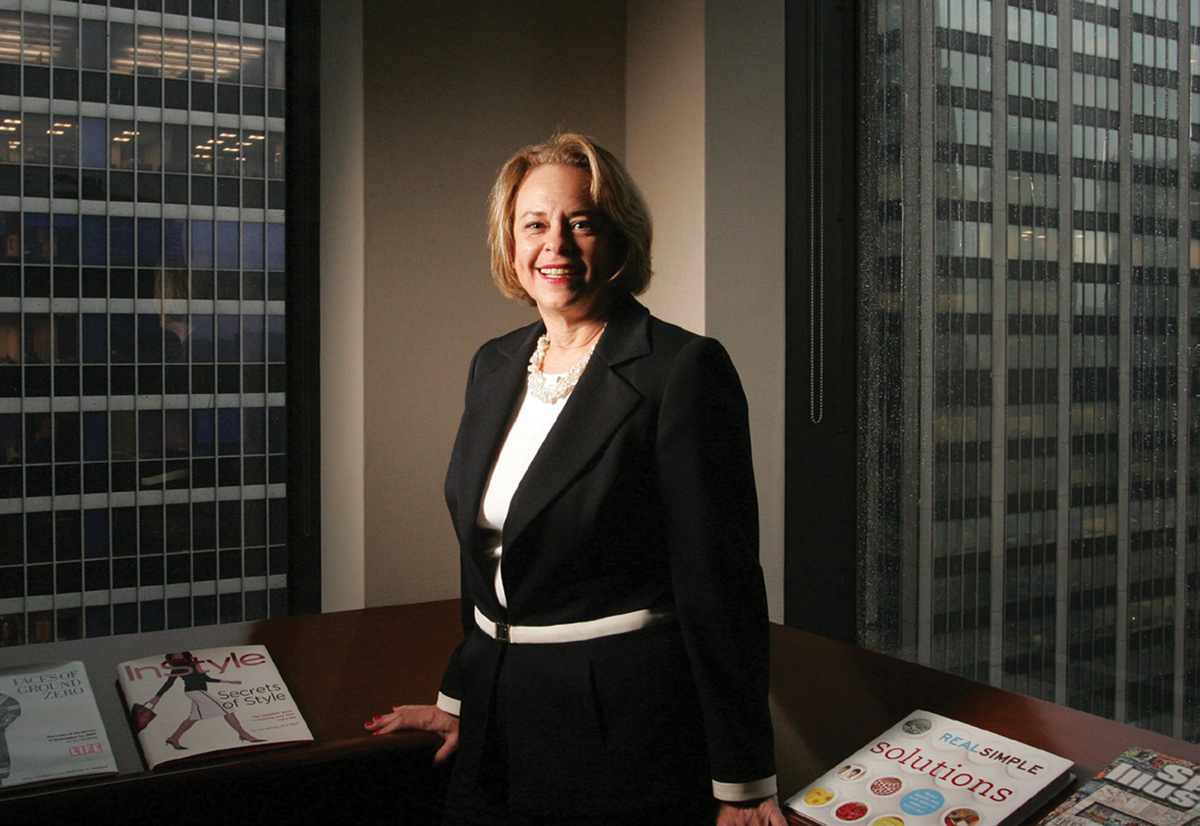
Drawn to Sports and Publishing
After high school in McLean, Virginia, Moore went on to Vanderbilt University in Nashville, Tennessee, and then earned an MBA from Harvard Business School in 1978. While her classmates headed for Wall Street, Moore wasn’t interested — “I always wondered exactly what they do there,” she says, jokingly. Instead, Moore went to Time Inc. “I was a big sports fan and that’s why I joined the company,” she says. “I turned my hobby of reading Sports Illustrated into my career.”
Through the 1980s, after starting at Sports Illustrated, Moore put in stints at Fortune, Money and Discover, moving up with every jump. By the early ’90s, back at Sports Illustrated as associate publisher, she began to make her mark on the company. Fittingly, Moore earned her claim to fame by tutoring Time Inc. about the value of women.
“I changed the equation at the company because I’m the one who began diversifying into women’s and children’s magazines,” says Moore. She launched Sports Illustrated Kids in 1989. “It was the first kid magazine and we hadn’t launched anything successful since 1974.” At the time, she says, “we thought you couldn’t make money targeting women, so even when I moved to People in 1991, we thought it was a dual-audience magazine.”
People and InStyle: Women as an Important Market
Moore was working with then-editor Lanny Jones. The pair transformed People into a newsmagazine for women, first moving from black and white to color pages. Next, they changed delivery from Monday to Friday. “News is like bread. The fresher it is, the more exciting it is.” Moore also inaugurated People special issues, such as its now-famous “Sexiest Man Alive,” “Best Dressed, Worst Dressed” and others. “It was a license to steal,” she laughs, looking back. “Once you determined this is really a woman’s magazine, you could see what you needed to do with People to unleash its potential.” Nowadays, as it has been for years, People is the company’s most profitable title and, as Moore likes to point out, People.com leads in online entertainment news, with 13 million unique visitors monthly.
The rest remains Moore’s groundbreaking history. She launched InStyle in 1991, which is, today, the nation’s largest-circulation fashion and beauty magazine — “ahead of Vogue,” says Moore. InStyle is Time Inc.’s third-most-profitable title (Sports Illustrated is second). Real Simple came next, in 2000. “We had a little piece of research that I couldn’t get out of my mind,” says Moore, which said that the average American woman spends 55 minutes a day just looking for things. “Time is the single most precious commodity to American consumers, especially for a woman,” she says. “So that was the whole idea behind Real Simple. We would get you organized and you would have an extra hour a day.”
Moore smiles, leaning back in her comfortable chair, and confides her secret to launching successful magazines. “It was such a simple concept, but it solved a problem. That’s where you find holes in the marketplace, and that’s what Time Inc. was particularly good at. We invented most of the categories we publish in.”
What’s in store for Moore as she moves on? She’s not saying. With her 26-year-old son, Brendan, enrolled at Harvard Business School and her husband, Donovan Moore, continuing work as a private wealth manager at Bessemer Trust, her horizon looks wide open, especially considering her dad’s second-act role model.
And what advice would she give young women who’d like to shadow her dramatic footsteps? True to form, Moore speaks forthrightly: “I think it’s all about self-assessment. Who are you? What are you good at? What do you like to do? Then use that to find a match. Turn your hobby into your occupation. You have to take responsibility for your career. I also say to young women, learn how to fill out your dance card. I’m the chairman of Time Inc. because I filled out my dance card better than anyone else. I’m the chairman because I’ve been here for 32 years and I’ve launched more magazines than [Time Inc. founder] Henry Luce. That’s why I’m in Luce’s office.”
“And I was very patient.”
Joanna L. Krotz is a multimedia journalist and speaker whose work has appeared in the New York Times, Worth, Money and Town & Country and on MSN and Entrepreneurship.org. She is the author of The Guide to Intelligent Giving and founder of the Women’s Giving Institute, an organization that educates donors about strategic philanthropy.
PROJECT: Women’s Edition
By Deborah Mesce
Funding for women’s news and feature services opened the door to journalism careers for many women worldwide in recent decades. The Women’s Edition program shows how women may fruitfully collaborate to gain global perspectives on women’s issues, and bring that knowledge to their writing.
Around the table sat 12 women journalists from Africa, Latin America, Asia and Eastern Europe, discussing the status of women in their cultures. The Africans said women in their countries have many babies, often too many to care for adequately. Reporters from India, the Philippines and Peru said families were somewhat smaller in their countries. Then the Romanian journalist surprised them all: “You know, in my country the government pays women to have children,” she said, explaining Romania’s strategy to reverse its population decline.
This conversation took place at Women’s Edition, a program that brings together small groups of veteran women journalists from influential media houses across the developing world to examine and report on a range of issues related to women’s health and development. They gain a global perspective on these issues by learning how countries both similar and different from theirs handle the same issues. As a Nepali reporter put it after several years in the program, “Now I think globally and write locally.”
Women’s Edition, funded by the U.S. Agency for International Development, takes a long-term view of working with journalists. Since 1994 when the program began, 62 journalists have participated. There was little turnover in the early years, but later a two-year participation limit was set. During their tenure in the program, the journalists attend weeklong seminars twice a year in locations around the world. Seminars focus on health and development issues. Each journalist takes away new data and research on specific topics, the insights of experts and memorable experiences from field visits that illuminate the issues. Following each seminar, each journalist prepares a special supplement, a series of articles or a broadcast program for her media house on the seminar topic in the context of her country.
The Population Reference Bureau (PRB), a nongovernmental organization in Washington that runs the project, solicits applications from women editors, reporters and producers every two years. Journalists hear about this from national and international journalism associations, schools and websites. As many as 200 candidates apply. PRB invites around 12 to participate. PRB looks for seasoned journalists who demonstrate a strong interest in women’s health and development issues and who have editorial influence in their newsrooms. To maintain geographic diversity, usually just one journalist is selected from a country.
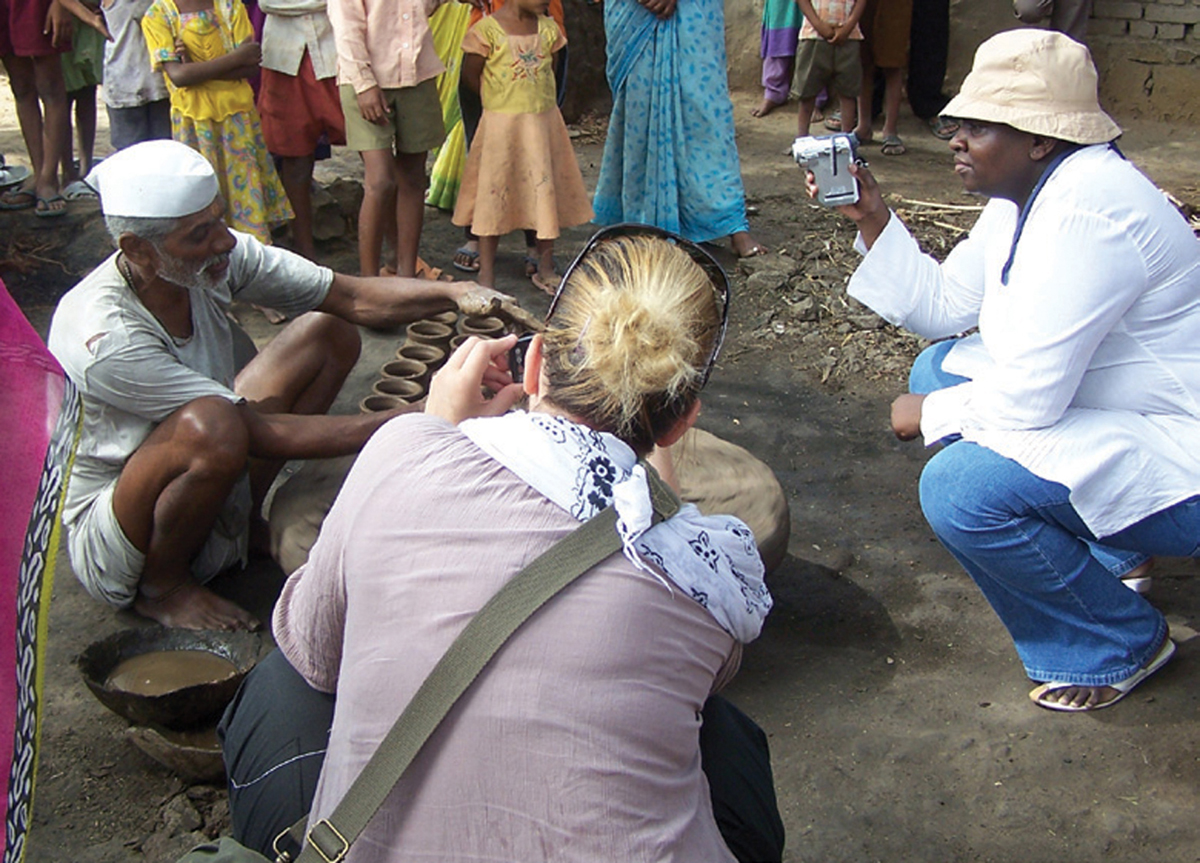
Women’s Edition grew from an earlier PRB project, Global Edition, which brought together senior editors from the developing world to focus and write on population and the environment. Similarly, Women’s Edition’s mission is to strengthen and increase reporting on women’s health and development and, in doing so, stimulate discussion on these issues among the public and policymakers in developing countries.
In organizing the seminars, PRB seeks input from the journalists in selecting a topic and then links the topic with a relevant venue. For example, a seminar on trafficking was held in New Delhi, where the journalists visited a brothel in the city’s largest red-light district and talked to Nepali sex workers there who had been trafficked years before. For a seminar on violence against women, Women’s Edition met in South Africa, which has one of the world’s highest rates of rape but also some of the most innovative programs to deal with the problem. Some seminars have been held in conjunction with international conferences and other events, such as the biennial AIDS conferences and special U.N. sessions. Other seminar themes have included links between gender and the environment, women’s empowerment and women’s reproductive health.
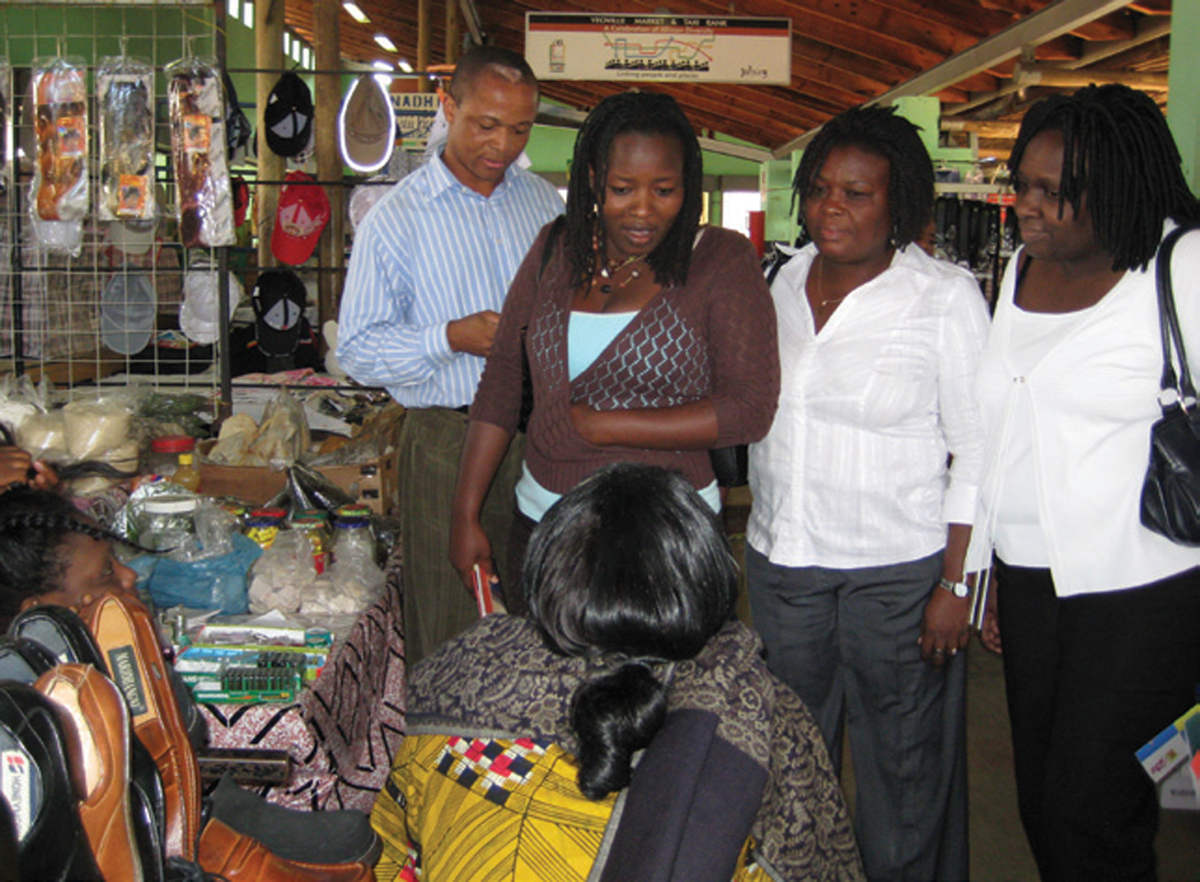
Sometimes a journalist’s report prompts action. After a magazine cover story on the health and social problems child brides face in India, the Tamil Nadu state government launched awareness campaigns in villages where child marriage is common. More often, the journalists receive calls from ministry officials, parliamentarians and NGO leaders who want more information. A Malawian journalist wrote about an innovative rape crisis center her Women’s Edition group visited in Johannesburg. She received a call from the Malawian president’s daughter, who wanted to become involved in local efforts to replicate it. Sometimes journalists take action on their own: A seminar visit to a rape crisis center in New York so inspired an Indian journalist that she persuaded a physician friend to open such a center in Mumbai.
Women’s Edition has a lasting impact on the journalists themselves. They become the experts in their newsrooms on women’s issues. They gain confidence in their knowledge and abilities, which helps them to lobby for coverage of women’s issues. They receive job promotions and gain more influence over what issues are considered newsworthy. “Gone are the days when health and women’s issues were a once-a-week affair,” said Ropa Mapimhidze of Zimbabwe, who was assistant editor at the Herald when she participated in Women’s Edition. She is now features editor at Newsday, a new independent newspaper.
Deborah Mesce is program director for international media training at the Population Reference Bureau and has been coordinator of Women’s Edition since 2001. Before joining PRB, she worked for more than 20 years as a reporter and editor for the Associated Press in the Connecticut state bureau and on the national staff in Washington.
Multiple Choice Questions
Questions
- Which factors inspired women in many countries to establish their own magazines?
- Male-run publications largely ignored women activists
- The news outlets that did cover women trivialized their goals
- Women that departed from the norms of domesticity and passivity were labelled as misfits or insane
- Women who demanded equality with men were depicted as militant and aggressive
- All of the above
- The first woman to lead Time Inc. was….
- Ann Moore
- Ariana Huffington
- Jane Fonda
- Diane Sawyer
- People and InStyle demonstrated that…
- Women consumers are mostly interested in fashion and celebrity news
- Women are an important demographic market in news media
- Women were already influential in traditional media networks
- There was no need to develop women-specific media
- None of the above
- Women’s Edition serves the following purpose(s)…
- Brings together groups of women journalists
- Examines and reports on a range of women’s issues
- Enables participants to gain a global perspective
- Enables participants to learn from each other in handling similar issues
- All of the above
- The objective of Women’s Edition is to…
- Advance the political interests of women at the cost of men
- Increase reporting on women’s health and development
- Begin discussion among the public and policy-makers in developing countries
- Organize with influential celebrities and policy-makers on issues of gender and development
- None of the above
Answers
- The correct answer is E (all of the above).
- The correct answer is Ann Moore (answer A). Ariana Huffington is the co-founder of the Huffington Post, so answer B is incorrect. Jane Fonda is an American actress and co-founder of the Women’s Media Center (answer C). Diane Sawyer is an American television journalist and co-anchor of ABC News’ morning news program.
- The correct answer is that women are an important market in the news media (answer B). The fact that the first Time magazines that publicists deemed “women-targeted” were fashion and celebrity news does not indicate that women consumers are most interested in fashion and celebrity news (answer A). Women were not yet influential in news networks, so Time Inc. and its subsidiaries were an anomaly (answer C). Answer D is incorrect because there was a clear need to develop women-specific media.
- The correct answer is E (all of the above).
- The correct answer is both B and C. Women’s Edition aims to increase reporting on women’s health and development (answer B) and begin discussions among the public and policymakers in developing countries (answer C). The objective is not to advance the interests of women at the cost of men, as gender equality is not zero-sum (answer A). The mission is not to simply engage with celebrities and policymakers, so answer D is incorrect.
Discussion Questions
- How are women and men depicted differently in media? Has the history of women’s exclusion from media influenced these representations? Why or why not?
- What are some impacts of the portrayal of women in media on women’s success?
- Select an election in a jurisdiction of your choice. What were the genders of the candidates? How were they represented by media?
- Do you think that social media provides a greater platform than traditional media for women’s representation and influence? Why or why not?
- How are transgender women portrayed in media?
- Use the additional resources, your experiences, or the experiences of people you know to reflect on how transgender people experience portrayals of gender and transgender people in media in a designated case study. For instance, you might choose Canadian media, American Media or French Canadian media for your examples.
Essay Questions
- Review the “2015 Status of Women in U.S. Media” report. Identify areas where there has been progress and where equal representation along lines of gender and race have fallen behind.
- What are the most common stereotypes of women perpetuated in media? In what ways are these representations dependent on race and class? Will having more women in media play a role in decreasing reliance on stereotypes of women?
- How has the use of social media influenced women’s social and political movements?
Additional Resources
Billingsley, A. “Technology and Narratives of Continuity in Transgender Experiences.” Feminist Philosophy Quarterly 1(1), 1 – 24: (2015).
Explores transgender narratives in media, social science disciplines, and among the family.
http://ir.lib.uwo.ca/cgi/viewcontent.cgi?article=1009&context=fpq
Glantz, J. “Women in Popular Music Media: Empowered or Exploited?” The Spectrum: A Scholars Day Journal 2(5), 3 – 38: (2011).
Investigates women’s attitude toward women in media and popular music through a feminist theoretical lens.
http://digitalcommons.brockport.edu/cgi/viewcontent.cgi?article=1018&context=spectrum
Jia, S. Lansdall-Welfare, T. Sudahar, S. Carter, C. & Cristianini, N. “Women Are Seen More than Heard in Online Newspapers.” PLOS One 11(2: (2016).
Quantitative analysis of the representation of gender and women’s views in online newspapers.
http://journals.plos.org/plosone/article?id=10.1371/journal.pone.0148434
Kamerick, M. “Women Should Represent Women in Media.” TEDxABQ. (2011).
TED Talk on the representation of women as victims; and victim blaming culture in media.
Lang, N. “AfterEllen and the Digital Media Bust: Queer Spaces for Women are Disappearing, Even on the Internet.” Salon. (2016).
Suggests that the lower buying power of queer women is influencing the reduction of media platforms dedicated to queer women’s issues and lived experiences.
Truitt, J. “Laverne Cox’s Actress Emmy Nod Puts Trans People in Bigot’s Living Rooms.” Guardian (2014).
Analysis of Laverne Cox’s influence in pop culture in the wake of her role in the Netflix original series, “Orange is the New Black.”
Truitt, J. “On Jill Soloway, Caitlyn Jenner, and the Trans Representation the Media Wants.” Feministing. (2015).
A critique of the media’s representation of transgender people, focusing on the discourse surrounding Caitlyn Jenner and her position in terms of race and class.
Women’s Media Center. “Status of Women in the U.S. Media.” (2015).
Features research on the gender gap in broadcast news, internet, print journalism and wire services.
http://www.womensmediacenter.com/pages/2015-statistics
Sandberg, S. “So We Leaned In… Now What?” TED Talks. (2014).
Sheryl Sandberg, Chief Operating Office of Facebook, discusses the reactions to “Lean In” and the ways in which women continue to struggle with success.
https://www.youtube.com/watch?v=YraU52j3y8s
Striphas, S. “A Dialectic with the Everyday: Communication and Cultural Politics on Oprah Winfrey’s Book Club.” Critical Studies in Media Communication 20, 295 – 316: (2010).
Examines the gendered communication strategies within Oprah Winfrey’s Book Club.
http://dx.doi.org/10.1080/07393180302773
Yasmin, M., Sohail, A. & Mangrio, R. A. Myths Broken or Sustained: Representation of Women Victims in Pakistani Media. Open Journal of Social Sciences 3(7), 209 – 219: (2015).
Highlights asymmetry in Pakistani media of descriptions of female and male victims and perpetrators of violence (female victims described with their marital status, male victims and perpetrators described using their profession.)
http://www.scirp.org/journal/PaperInformation.aspx?paperID=57967

